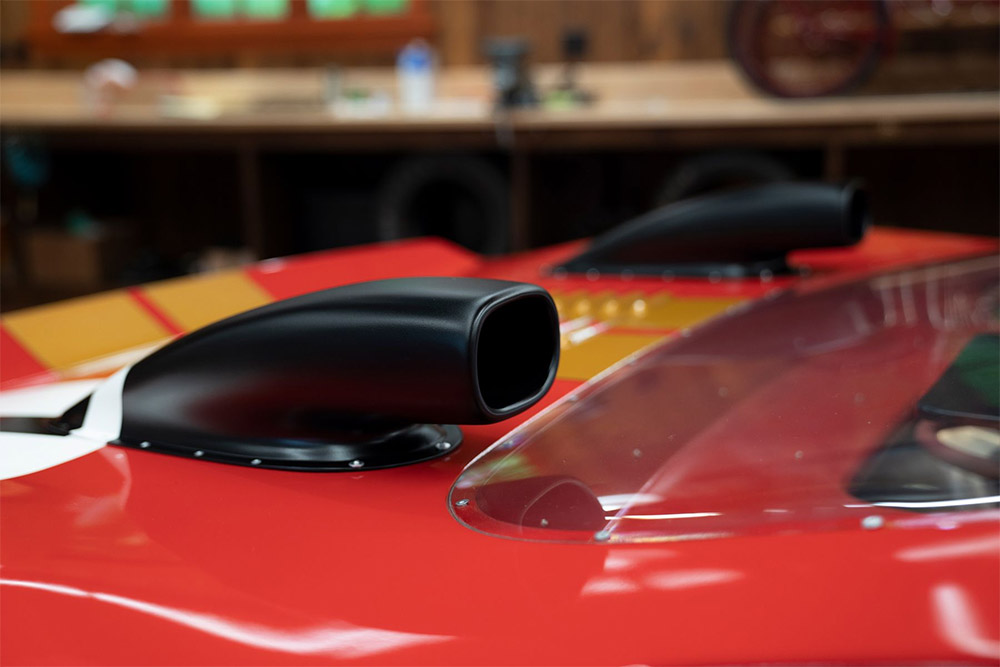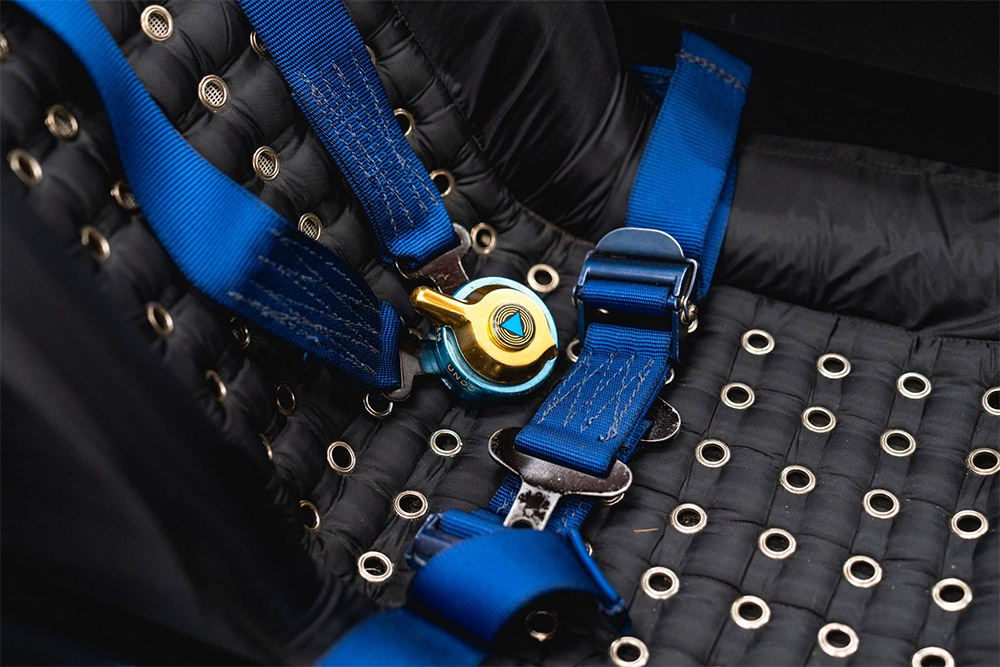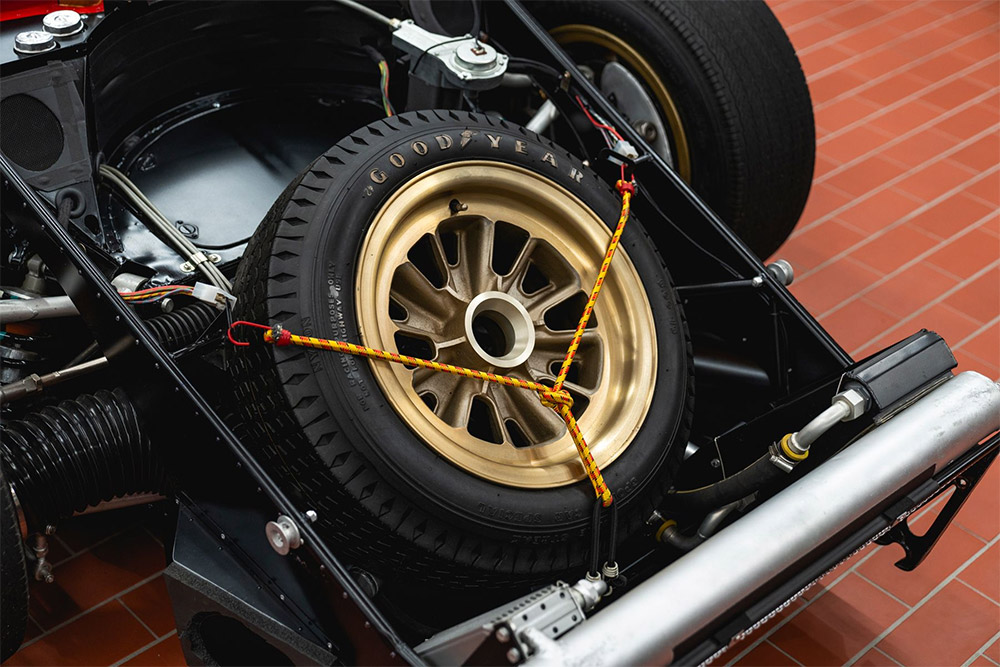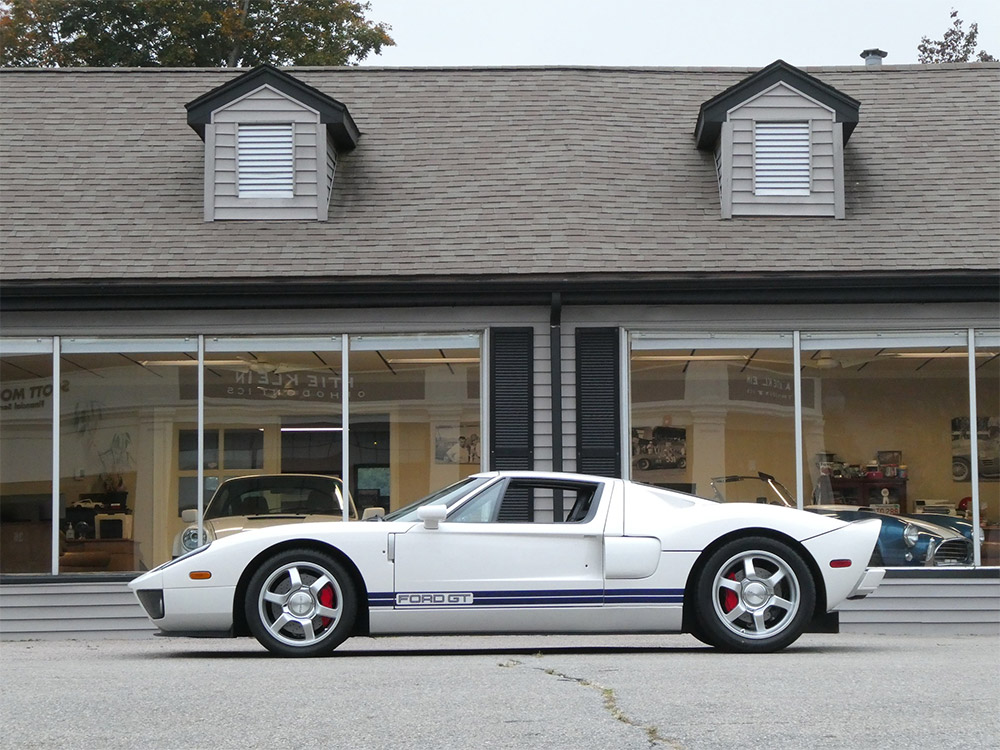Throughout the 1960s, Ford Motor Company’s Total Performance strategy relied on the expertise of professional racing teams to deliver victories across a wide range of motor sports activities, from drag racing to NASCAR. Ford’s ultimate ambition was to win the 24 Hours of Le Mans, the world’s most prestigious sports car race, a feat that its GT40 program achieved in 1966 and 1967.
In the US, Shelby American and Holman & Moody were the teams that Ford contracted to run its factory racing cars and develop the GT40 into a Le Mans winner. In Europe, Alan Mann Racing Ltd. of Byfleet, Surrey, played a similar role, serving as a Ford factory team from 1964 through 1969.

During this period, Alan Mann entered Ford race cars in a variety of events, including the Monte Carlo Rally, Tour de France, and 24 Hours of Le Mans. In Touring Car racing, Alan Mann’s Ford Cortinas and Falcons were enormously successful, winning the 1965 European Challenge and the British Championship in 1967 and 1968.
In fall 1965, Alan Mann Racing began developing its own version of the GT40, which had, until that time, been built exclusively by Ford Advanced Vehicles in Slough, England. That November, the team took delivery of two GT40 Mk Is, chassis 1019 and 1023, which they tested, analyzed, and studied for weaknesses. Based on its examinations, Alan Mann Racing was convinced that the GT40 Mk I could be made significantly faster through weight reduction and improved handling.

The team ordered five new chassis direct from Abbey Panels, which incorporated more than a hundred modifications to the standard GT40 tub.
Delivered in late 1965, Alan Mann’s purpose-built GT40 tubs were designated with unique “AMGT40” serial numbers, rather than the standard Ford sequence. Among many important changes, these special chassis incorporated a lightweight aluminum upper-superstructure, built-in crossover fuel system, and additional suspension pickup points, allowing Alan Mann to fine-tune the car’s handling with adjustable castor, lower roll centers, less anti-dive up front, and less anti-squat at the rear.
The first two chassis, numbered AM GT-1 and AM GT-2, were built up by Alan Mann into prototype Lightweight models, while the remaining three tubs would later be built up by Shelby American into Mk IIs numbered XGT-1 through XGT-3.

These Alan Mann Lightweights were utterly unique and represented the most advanced version of the small-block GT40 to date. In addition to their customdesigned chassis, the Alan Mann GT40s featured bespoke bodywork, fashioned entirely from ultra-lightweight .030-thickness aluminum, in lieu of traditional fiberglass. The bodies were distinguished by their flat sides, with riveted side intake scoops, Mk II-style deck scoops, and narrower roof section. In their effort to reduce weight, Alan Mann Racing left the lower rocker sills open, without the typical fiberglass covering, allowing the horizontal stiffening ribs to be seen. The result was the lightest GT40 ever built, with a curb weight of just 2,160 pounds.
Mechanically, the Alan Mann Lightweights featured Ford’s formidable competitionspec 289 cid engine coupled to a prototype five-speed ZF transaxle. The filling system in the driver’s-side rear bodywork was a novel feature, allowing oil to be added to the sump without opening the tail. The Lightweight GT40s also featured Phil Remington’s clever quick change brake system, adjustable upper control arms, and Halibrand magnesium wheels.
Completed in March 1966 and finished in Alan Mann’s livery of Ford Monaco Red with gold stripes, AM GT-1 and AM GT-2 debuted at the 12 Hours of Sebring.

John Whitmore and Frank Gardner were entrusted with AM GT-1, while Graham Hill and Jackie Stewart drove AM GT-2. As the cars were finished in identical liveries, AM GT-1 received additional white splashes on the nose and tail to distinguish it on track. Both Alan Mann Lightweights showed encouraging results in qualifying. AM GT-2 was third fastest, beaten only by the Scuderia Ferrari 330 P3 and a GT40 Mk II.
During the race, AM GT-1, which had qualified in 7th position, ran as high as 5th Place – behind two Mk IIs and a pair of Ferraris – but retired in the ninth hour with clutch problems. Two weeks later, the two Alan Mann Lightweights, together with Hill, Stewart, and Whitmore, were present at the Le Mans test weekend held April 2–3, 1966. Once again proving their potential, AM GT-2 and GT-1 were the 3rd and 4th-fastest cars respectively, setting times that were bettered only by one GT40 Mk II and Ford’s experimental J-car.
Despite these impressive performances at Sebring and Le Mans, Alan Mann Racing received word from Ford Motor Company that they were to run seven-liter Mk IIs for the remainder of the 1966 season, including at the 24 Hours of Le Mans. Overnight, their promising new Lightweights were rendered obsolete. As a result, both cars were put up for sale. AM GT-1 was sold to Holman & Moody and AM GT-2 was sold to Australian racer Paul Hawkins, who went on to campaign it with great success through 1968.

Soon after it arrived at the Holman & Moody workshop, AM GT-1 was built into experimental Mk IIB specification, which included fitting a Weber-carbureted 427 engine, automatic transmission, and full roll cage. In this form, AM GT-1 was tested at Daytona in 1966 and, according to several sources, may have been shipped to Le Mans to serve as a backup car. Later that year, the GT40 was returned to its original drivetrain configuration and then sold, in 1967, to the Firestone Tire and Rubber Company for use in high-speed testing. From there, ownership of AM GT-1 passed to well-known racing driver and textile heir Buck Fulp of Anderson, South Carolina, who kept the car for a short time before selling it back to Holman & Moody.
In 1969, Douglas Champlin, a successful Oklahoma-based oil executive and prolific collector of military aircraft, purchased AM GT-1, intending to use the former endurance racer as an occasional road car. Mr. Champlin had a local mechanic named Carter Maxwell set up the GT40 for street use, fitting air-conditioning and a full leather interior.
One day, while Mr. Champlin was away, his teenage house sitter discovered the GT40 in the garage and invited a friend to take it for what would prove to be a very brief joyride. Within a mile of Mr. Champlin’s house, the inexperienced driver lost control of AM GT-1 and crashed it into an earthen embankment. While neither driver nor passenger was hurt, the GT40 had suffered considerable damage.

After deciding not to carry out repairs to return his GT40 to the road, Mr. Champlin sold the car to a local dentist named Edwin Recknagel. Over the next seven years, Dr. Recknagel did very little to the car, other than collecting an assortment of parts. In 1979, he sold AM GT-1 to Shelby collector Larry Zane, taking a GT350 R as part exchange. In 1982, the current owner acquired AM GT-1, fulfilling a childhood dream of owning a red GT40. In an article written for The Shelby American, he explains the fateful decision that led him to acquire the first Alan Mann Lightweight:
“I knew very little about GT40s at that point. I have never really been around one. The car I was looking at was completely disassembled and had obviously been seriously bent. There were parts everywhere…I was happy to see that virtually every suspension piece was not only with the car but appeared to be in good, usable condition…The car appeared to be all there but with a complete aluminum body. As far as I knew from my research, no aluminum bodies were ever used on any GT40s. They were fiberglass. So this question loomed… I figured that if I was ever going to own a Ford race car, this was the one. It was time to roll the dice or walk away. Being able to hold onto a leather-wrapped steering wheel with the center cap reading ‘Ford GT’ provided a very strong attraction. I bought the car.”
About a year after his acquisition, the current owner was visited by Ronnie Spain, one of the world’s great authorities on GT40s. According to the consignor, “Ronnie carefully checked everything out and exclaimed ‘This is AM-1.’ I had just found out that I owned a factory Ford team prototype that is one of two aluminum bodied GT40s ever built.”

After nearly two decades of fits and starts, the restoration of AM GT-1 commenced in 2004 when the current owner enlisted Robert Ash. Based in Norcross, Georgia, Ash is widely regarded as one of the leading experts in GT40s, having restored some of the most significant examples to exacting concours-quality standards. Though the restoration of AM GT-1 was a significant undertaking, the decision was made to restore the car back to its original Le Mans test days configuration, as it had last raced in April 1966.
Over the next 15 years, Ash completely restored AM GT-1 to its original glory, beginning with the car’s original tub, noting in a letter to the owner that “extra effort was made to retain the original ‘Alan Mann’ spec monocoque panels.” The restoration, which addressed all cosmetic and mechanical elements, is remarkable for its exceptional attention to detail.
For example, the aluminum bodywork is finished in proper acrylic lacquer paint with the roundels and striping carefully matched to a section of original paint found on the front insert panel. Elsewhere, the GT40 features original British fasteners; NOS Goodyear Bluestreak tires; and period-correct hoses, clamps, and fittings. Even the safety harnesses, fire system, and bungee cord that holds the spare tire in place appear just as they did in 1966.
AM GT-1 made its post-restoration debut at the 2019 Pebble Beach Concours d’Elegance®, where it captured Second in Class in the competitive Postwar Sports and Racing Class. Later that year, it earned a Platinum Pick Judges Choice Award at the Muscle Car & Corvette Nationals in Chicago, receiving the highest point score (999 of 1,000) of any car in the event’s 11-year history. In 2020, it was exhibited at the Amelia Island Concours d’Elegance and the Indiana SAAC’s Mid America Ford and Shelby Nationals, where it received a special Le Mans Award.
Today, AM GT-1 remains in pristine, concours-quality condition and is presented with an extensive file of supporting documentation, including copies of Alan Mann and FoMoCo internal records, a detailed ownership history and race record, archival photographs, magazine articles, and correspondence.

A superb example of a unique competition car, AM GT-1 is integral to the GT40 legend. Specially developed by Alan Mann Racing on behalf of the Ford Motor Company, AM GT-1 is the first of just two aluminum-bodied Lightweights built and is among an extremely select group of surviving small-block GT40s raced by a Ford factory team.
Not only were these aluminum-bodied cars the lightest GT40s ever built, they also incorporated numerous technical advances and showed great promise during their outings in 1966. Without question, the Alan Mann Lightweights were the most innovative, best-performing, small-block GT40s produced while the Ford Motor Company oversaw the model’s production. In many ways, they can be considered the spiritual predecessors to the JWA Gulf GT40s that dominated endurance racing during 1968–1969.
Ford’s decision to halt further development of the Alan Mann Lightweights rendered them the rarest of all GT40s. With just two examples built, they are far more exclusive than any of the Mk I–Mk IVs, prototypes, and roadster models.
The appearance of AM GT-1 at auction represents a unique opportunity to acquire a Ford factory team GT40 with noteworthy period-racing history, exceptional specifications, a well-documented provenance, and an award-winning restoration by the world’s foremost expert on the model. Gooding & Company is proud to present this important car on behalf of its long-term caretaker and recommends it to any collector in search of a historically significant GT40.
*Please note that this vehicle is sold on a Bill of Sale.







